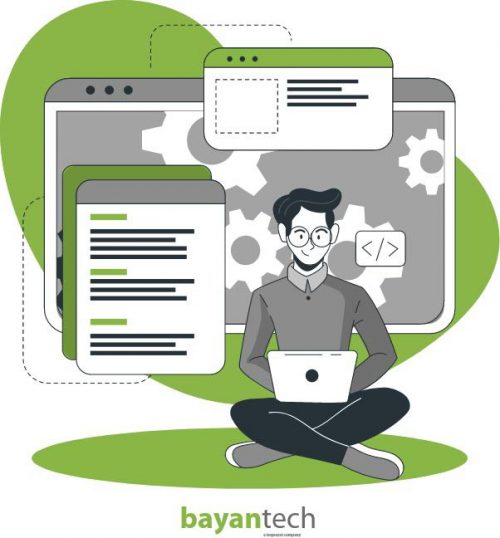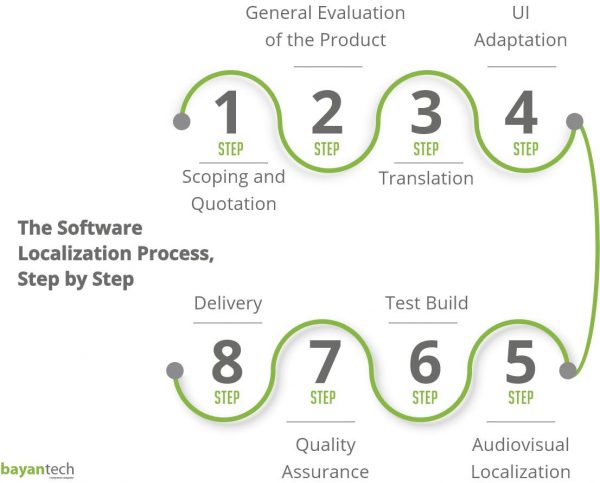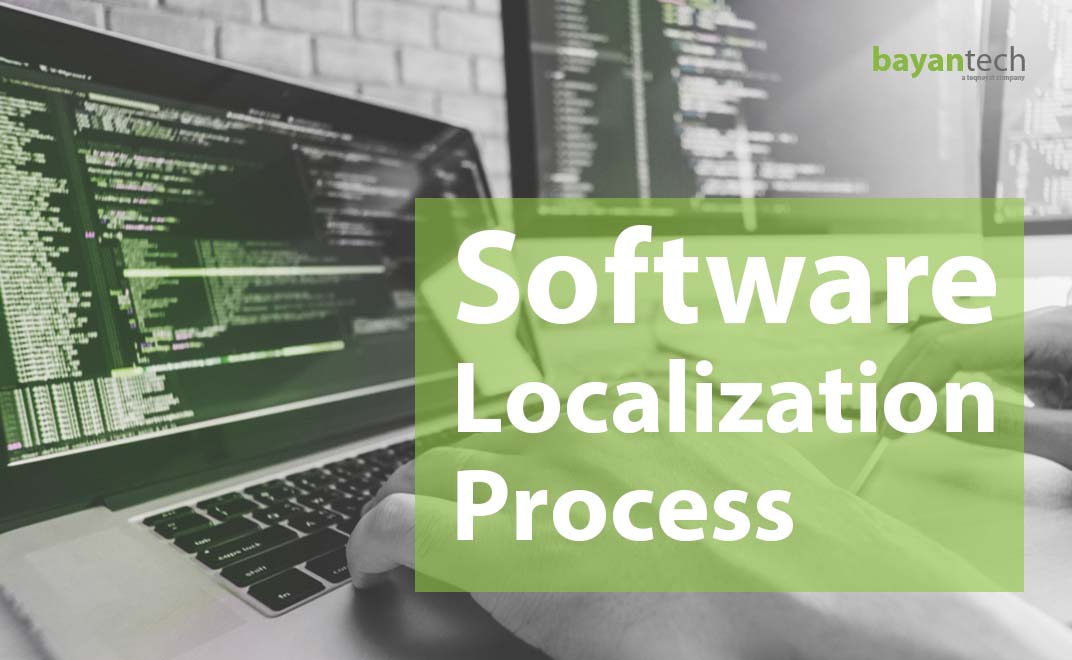The way we develop, distribute, and consume software has changed dramatically in the past two decades. Just 10 years ago, a software program had to be burned into a CD and physically shipped to users worldwide. The mass adoption of cloud technology, greater network connectivity, and the adoption of agile development methodologies are just three of the numberless factors that powered the transition from the “classic” approach to software distribution to the current SaaS (software as a service) model.
The possibility of distributing a piece of software solely through digital platforms means that virtually any software developer can foster a wide user base for their products. But there are still many barriers, though they’re not technological. Instead, these barriers to the seemingly limitless growth that contemporary tech has to offer are linguistic and cultural. Understanding cultural diversity and adapting accordingly is essential to all businesses, be they digital or not.
40% of the internet is not in English. So, for your program to grow its user base, it’s essential to localize it. But, what is software localization? How can one ensure a successful software localization process? How can localization services help you attain wider outreach and higher profits?
In this guide to software localization, we’ll examine:
- The role and scope of software localization.
- The crucial steps of a successful software localization process.
- Software localization best practices.
- How to choose the right language service provider.

What Is Software Localization?
Software localization is the process of adapting software so it matches the linguistic and cultural conventions of a new locale, while also adapting to its legal and technical requirements. It differs from the translation process because it requires a more holistic view of the product. Going beyond plain text translation, the localization process involves all user-visible components of the software.
In some contexts, the term “software localization” refers to app localization, eLearning localization, and even website localization. While it can be used as a synonym or an umbrella term, the steps and goals of each software localization process will likely vary depending on the type of source material we’re dealing with.
Some aspects of a piece of software that will need to be adapted during localization are:
- All on-page writing, including error messages, forms, and other elements that are often taken for granted.
- The layout of the user interface, especially in the case of RTL languages, which may require some elements to be mirrored.
- Symbols, icons, and other graphic elements.
If the software in question is a mobile app, the localization team may also implement app store optimization to build an integral software localization process. It’s often suggested that operating systems may also be a relevant concern when localizing. This is rarely the case, since operating system (OS) usage is mostly homogeneous around the world, with a wide majority of users preferring some version of Microsoft Windows. An OS-related conflict is far more likely in the world of mobile phones. For instance, as PCMag reported, iPhones are widely used in the United States and Japan, while Android phones are the leading choice in India and Brazil.
Working on a software localization project?
We’ve created a software localization checklist to help
you ensure all aspects of your project are covered,
from alt-text translation to UI mirroring.
Due to its complexity, the software localization process is best handled by a multidisciplinary team at a localization services company. A complete software localization team will include:
- Specialized project management, that will ensure high standards, manage the client relationship, and take care of quality assurance.
- Translators, who will make sure all of the software's on-screen text is in the user's language.
- Editors and proofreaders, who will ensure the translated text is relevant, appropriate, and helpful to the user.
- Engineers, developers, and designers, who will adapt all UI elements and imagery.
- Testers: Localization testers' role is ensuring that the locale-specific versions of a software product offer a UX that is up-to-par with the original.

In the case of eLearning platforms with audiovisual material, subtitling professionals and video editors may also be part of the localization team.
The Software Localization Process, Step by Step
Generally, the software localization process can be divided into the
following eight steps:
- Scoping and quotation
- General evaluation of the product & Pseudolocalization
- Translation
- UI Adaptation
- Audiovisual localization
- Test build
- Quality assurance
- Delivery
Let’s take a closer look.

Step 1. Scoping and Quotation
First, the project manager and the client will determine the scope of the software localization process for the product in question. The project manager will then create a detailed quote. After it has been approved and some administrative steps have been taken (such as signing a contract and making a downpayment), the localization team will begin its work.
This step may seem irrelevant to the localization/translation process itself, but it’s actually vital. Not because it’s decisive in whether the localization company wins the client, but mainly because communication is the necessary foundation of any constructive business relationship. Understanding the context of the translation of software for the client, creating opportunities for conversation, and asking the right questions should be the first steps to any localization project.

Step 2. General Evaluation of the Product
Once the software localization provider has a comprehensive view of the project, it’s time for the team to evaluate the product and identify potential problem areas and locale-specific challenges. For instance, a product may need to undergo significant design changes before it can enter a new market.
At this stage, the team will also decide on a workflow that best meets the needs of the project. While the structure of the software localization process won’t change dramatically from project to project, but some specific choices may need to be made to streamline the project. Some elements of the project that may demand a change in plans are audiovisual elements and material that’s an uncommon or heavy file format.
The most advanced localization teams usually implement pseudolocalization before integrating the translated texts into the interface. Pseudolocalization allows UI experts to test whether the product’s layout is responsive to text strings that are significantly longer or shorter than the original. Implementing pseudolocalization and acting on the results ensures that the translated interface will display its text properly.

Step 3. Translation
Once the team has a full understanding of the project, the next step of the software localization project will consist of isolating the strings that will be translated from the source code and rendering them into the target language.
A consistent software translation usually requires the use of a translation management system, a translation memory (TM), and a glossary, among other resources and resource files. At leading software translation services providers, linguists often use a localization tool that will conduct an initial machine translation (MT), that will serve as a draft. While automated solutions can do the heavy lifting, as of today, they don’t produce the same results as human translators. No professional localization provider relies solely on MT.
After the machine translation, professional linguists will conduct in-depth editing of the output to ensure it has the action-oriented, conversational tone of good UX writing. The translated strings are then handed off to be integrated into the user interface (UI).

Step 4. UI Adaptation
At this stage of the software localization process, engineers, designers, and developers will integrate the translated strings into the UI, and make any changes that are culturally or technologically necessary. This may include everything from mirroring elements, as we mentioned a few paragraphs ago, to finding ways to deliver the platform on low internet connections.
A cutting-edge localization platform will allow linguists and designers to work parallelly, detecting when strings may expand or shrink enough to demand a change in UI.
Sign up to our newsletter to receive the latest blogs and news.

Step 5. Localization of Audiovisual Material
For a full, perfectly localized user experience, audiovisual material can’t be left in the source language. The most common approach is subtitling the material, but in cases in which cultural incongruences may cause a bad impression on the new user, editing or replacing the content may be best.
A professional software localization company will be able to handle this material in the most culturally appropriate way. Your language services provider should also be able to offer the adaptation of this material as part of the localization process. Having this in mind, it’s ideal that, when you’re vetting potential language partners, you make sure they’re a one-stop solution.

Step 6. Test Build & Testing Process
Testing is an integral part of the software development process, whether we’re building an application from scratch or localizing. The testing process consists of building the software application and using it “like a user would”, looking for errors. These errors may be flaws in the localized content, usability problems, or strings that have been overlooked during the software translation stage.

Step 7. Quality Assurance
No software localization process is complete (or effective) without quality assurance. While quality control is a set of choices that make every step of the process as accurate and conscious as possible, quality assurance’s goal is to guarantee that the results meet the company’s standards. As the professional in charge of the software localization process, the project manager will conduct the final rounds of QA, revising all aspects of the software application.

Step 8. Project Delivery
Finally, the localized software is delivered to the client. In some cases, the first delivery will be a beta, which the client will be able to test. Based on that feedback, the localization team will refine the product and create a final version.

The Challenges of Software Localization
Aside from what we may refer to as the regular challenges of translation and localization, the software localization process has its own difficulties. Of course, any roadblocks can be overcome by a professional company, implementing software localization best practices.
These challenges usually are:
Clarity and consistency. These are the two key traits of quality UX writing. An expert localization team will be able to maintain them, even in translation. But, the tone that users prefer may vary across nations, which adds a new layer of difficulty to the UX writing dimension of the software localization process.
Display issues. Research suggests that 72.6% of the users will exclusively access the internet through their smartphones by 2025. Therefore, responsivity is not optative. While responsive design is practically a given, layout changes consequent with localization may affect how your product is displayed on certain mobiles.
Context & accuracy. Knowing what the program is for, who it’s for and why it helps users solve a problem will help linguists make decisions when there are two possible ways to translate a sentence, or when the meaning of a sentence is ambiguous. Understanding the context of your app helps your language partners produce an accurate and fully functional localization.
Continuous localization. If your software’s constantly been updated, modified, and upgraded, localization will need to be a continuous process. Localization is not a one-off task. Any expansion strategy requires an ongoing relationship with a language services provider. Especially, if you’ll continue to expand and will require your product to be available in multiple languages.
But teams working with an agile development process or building progressively upon a Minimum Viable Product will be particularly inclined to handle the software localization process as an ongoing partnership, since they’ll think of their software product as a constant work in progress. In these types of cases, a company may find it difficult to control their software’s multilingual versions without a synchronized effort. Explaining your development process to your LSP will prevent misunderstandings and help you design the most efficient software localization process possible.

The Challenges of Software Localization
Creating multilingual software is the best way to grow your user base – and your business. But it may be something you can’t handle in-house. It’s not uncommon for a company to not be able to embark on a localization project on its own. Localization is mostly the job of language service providers, who will partner up with your business and deliver a quality multilingual product that’ll help you grow.
Software localization services require four types of expertise: Linguistic and cross-cultural expertise, UX design expertise, software development expertise, and subject-matter expertise. Subject-matter expertise will depend on what your product will be used for. If you’ve created a tool to serve a very specific demographic, such as medical doctors or engineers, the linguists in charge should have insider-level knowledge of the discipline.
The localization services company you choose should have a team that can cover you on all these fronts while working with the best technology available. The software localization process is lengthy and resource-intensive, so you’ll want to receive updates on your localization team’s efforts. Therefore, it’s crucial for the company you choose to also provide great customer service.

The software localization process is a tricky one that can’t be left in the hands of inexperienced linguists. Nor can it be handled as a side project. Having a perfectly localized software product will make sure you make a great entry into your target market, and turn strangers, not only into customers but also into advocates for your product.
At bayantech, we’re software localization experts with almost two decades of experience. Whether your company’s already operating at a global scale, or you’re taking your first steps towards expanding abroad, our team will understand your business needs and deliver a localized product that meets your goals.









